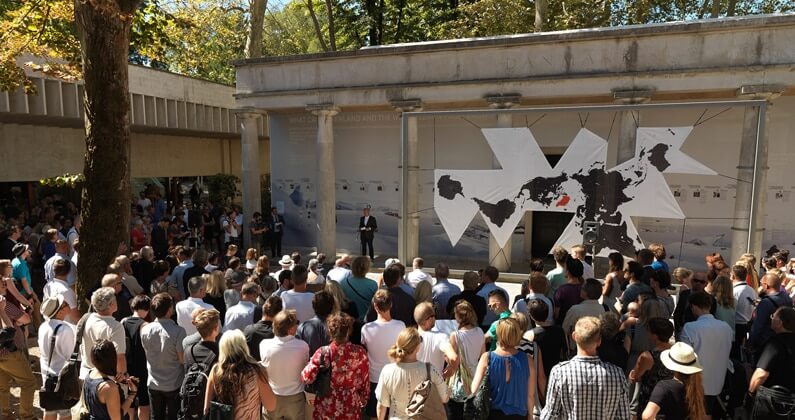Possible Greenland

Exhibition period
August 29 - November 25, 2012
A project developing new visions for the future of Greenland. The results will be exhibited at the Danish Pavilion at the 13th International Architecture Exhibition at the Venice Biennale in 2012.
Greenland is a new fulcrum of the world
The current development in the Arctic region positions Greenland as a new geopolitical fulcrum of the world. Greenland is also faced with a paradigm shift, driven by a political development towards independence, internal demographic challenges and dramatic climate change. “Possible Greenland” was a cultural and business-oriented knowledge and communication project latches on to a highly topical agenda. It focused on the challenges and opportunities that Greenland faces as the ice melts, vast mineral resources become accessible, and new industries and urban cultures emerge. “Possible Greenland” focused on the solutions that Greenlanders have realised they need to develop, solutions that the global community and business communities can help to bring to fruition; those who take part also help to set the agenda.
“Possible Greenland” was the first collaborative project of its kind between Greenland and Denmark. Teams of architects, engineers, urban planners and strategists raise essential strategic questions, while creating positive, concrete scenarios to inspire and qualify the debate on the future sustainable development of Greenland in a global context. Taking into account the unique nature of Greenland’s history and culture, the teams – headed by curator Minik Rosing, the internationally renowned Professor in Geology at the University of Copenhagen, and co-curator NORD Architects Copenhagen – have developed innovative and sustainable visions for economic, social and cultural development in Greenland.
How can architecture contribute?
The aim of the “Possible Greenland” exhibition was to give the audience – architects, urban planners, investors, politicians and others – an insight into Greenland as having great political, cultural and business value in a globalized context.
As we move from the Holocene to the Anthropocene geological era, the human effect on the Earth and its ecosystems have been recognised. It was the ambition of “Possible Greenland” to explore how architecture can contribute to the positive development of Greenland and of the Greenlandic society.
The exhibition provided a spectacular experience of ‘Greenlandness’ through images, film, models and artefacts. In a variety of sections, representing central perspectives, “Possible Greenland” explored the main challenges and opportunities that Greenland is facing.